Introduction – 8 Top Benefits of Matsyasana | 9 Simple and Easy Step-by-Step Instructions of Matsyasana
Matsyasana holds spiritual significance, associated with the activation of the Vishuddha Chakra and symbolizing the preservation of wisdom in Hindu mythology. The pose’s stress-relieving properties make it a useful tool in promoting mental well-being, reducing anxiety, and fostering a sense of calm.
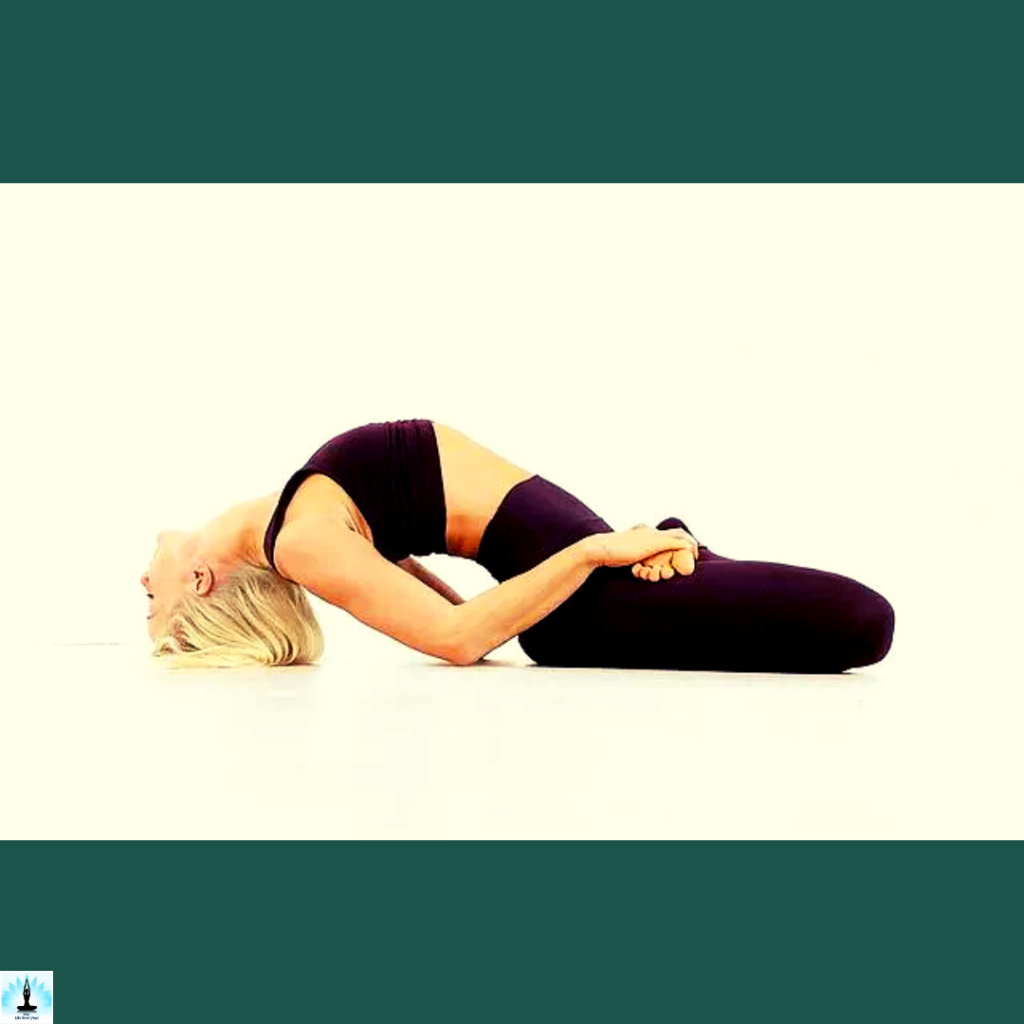
Table of Contents
The Yogic Philosophy of The Matsyasana
The Matsyasana, or Fish Pose, is a fundamental asana in the yogic philosophy that embodies both physical and spiritual aspects. In this pose, the practitioner lies on their back, arching their spine and lifting their chest, resembling the graceful form of a fish. Physically, Matsyasana opens and stretches the chest, throat, and abdomen, improving flexibility and strengthening the back muscles.
Matsyasana holds significant spiritual symbolism in yogic philosophy. It is associated with the mythological story of Lord Vishnu assuming the form of a fish to save the ancient scriptures and the sage Manu from a deluge.
Embracing both the physical and symbolic dimensions, Matsyasana serves as a holistic practice aligning the body, mind, and spirit in the yogic journey.
Which Chakra is Activated by Practicing Matsyasana
The practice of Matsyasana, or Fish Pose, is believed to activate and stimulate the energy associated with the Vishuddha Chakra, also known as the Throat Chakra. Located at the throat region, this energy center is linked to communication, self-expression, and the ability to speak one’s truth.
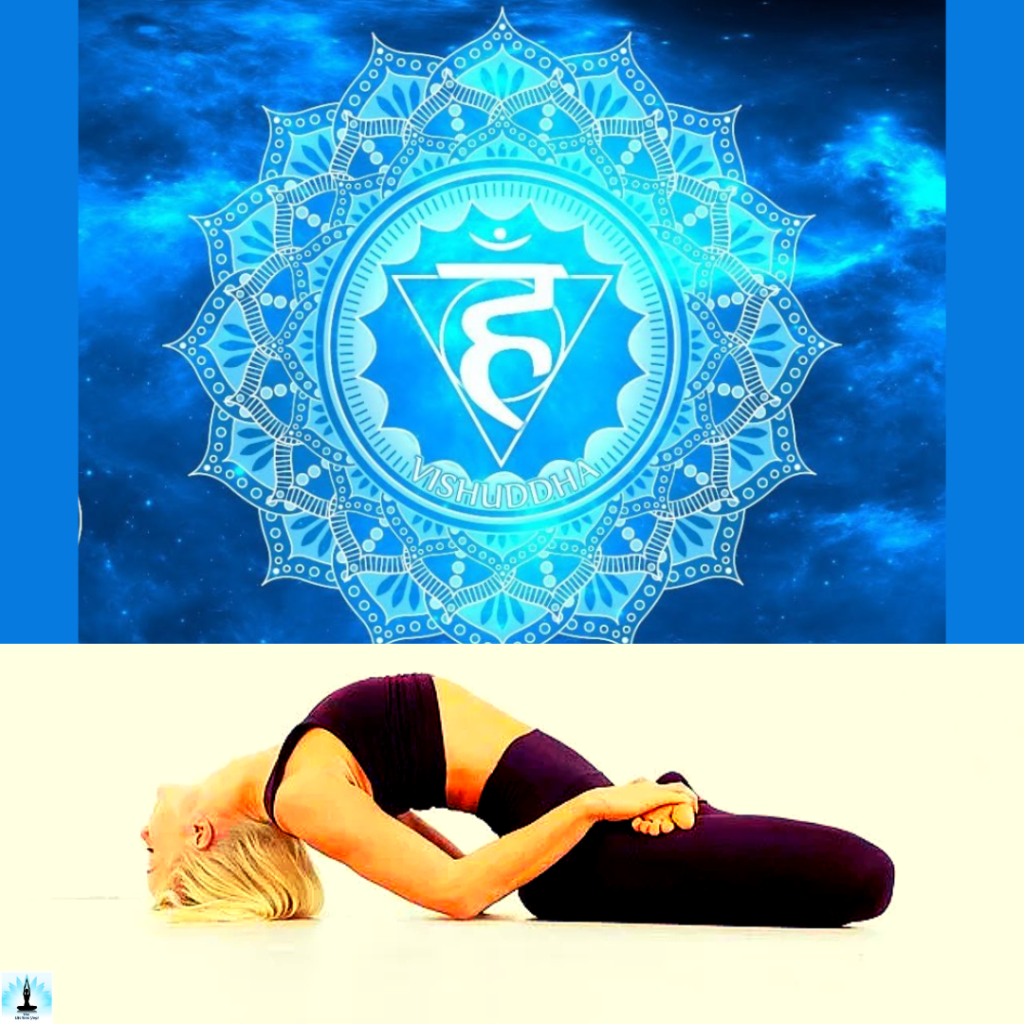
Matsyasana involves a deep arching of the neck and throat, facilitating the opening of this chakra and promoting balance in its energy flow. As the chest expands and the throat is stretched in the pose, practitioners may experience an enhanced sense of clarity in communication, improved self-expression, and a heightened awareness of their authentic voice.
Top Benefits of Matsyasana
Matsyasana, or Fish Pose, offers a range of physical, mental, and spiritual benefits. Physically, this yoga pose stretches and opens the chest, throat, and abdomen, improving flexibility in these areas.
- Chest and Throat Stretch: Matsyasana involves a deep stretch of the chest, throat, and abdomen, promoting flexibility in these areas.
- Posture Improvement: Regular practice strengthens the upper back and neck muscles, contributing to better posture.
- Respiratory Capacity: The pose stretches the intercostal muscles, enhancing lung capacity and promoting better breathing.
- Thyroid Stimulation: Matsyasana stimulates the thyroid and parathyroid glands, potentially aiding in metabolic regulation.
- Stress Reduction: The backbend and chest opening help alleviate tension and fatigue, providing stress-relief.
- Anxiety Reduction: The pose’s calming effects can contribute to reducing anxiety and promoting a sense of calm.
- Throat Chakra Activation: Matsyasana is associated with the Vishuddha Chakra, enhancing communication and self-expression.
- Spiritual Connection: The pose’s holistic nature fosters a deeper connection to one’s authentic voice and truth.
What Muscles Do Matsyasana Work?
Matsyasana primarily engages and works on several muscle groups throughout the body. The pose targets the muscles in the upper back, including the trapezius and rhomboids, as the practitioner arches the spine and lifts the chest.
Moreover, the muscles in the neck, particularly the sternocleidomastoid and scalene muscles, are actively involved in supporting the head and creating the arching shape. Matsyasana also activates the muscles in the chest, such as the pectoralis major and minor, as they are stretched and opened during the pose.
Step-by-Step Instructions of Matsyasana
Here are step-by-step instructions for Matsyasana (Fish Pose):
Starting Position:
Begin by lying flat on your back on the yoga mat, legs extended and arms resting alongside your body.
Preparation:
- Place your hands underneath your hips, palms facing down.
- Press your forearms and elbows into the mat, lifting your chest slightly.
Arching the Back:
- Inhale deeply, lifting your chest further by pressing through your forearms and elbows.
- Allow your head to gently tilt backward, bringing the crown of your head to the mat.
Lifting the Chest:
- Keep the weight on your forearms and lift your chest as high as comfortable.
- Arch your back and draw your shoulder blades together to open the chest.
Engaging the Legs:
- Point your toes and engage your leg muscles, extending through the heels.
- Press the thighs and legs into the mat for stability.
Breathing:
Maintain deep and even breaths, allowing the chest to expand with each inhale.
Hold the Pose:
Hold the pose for 15-30 seconds, gradually increasing the duration as you become more comfortable.
Release:
- Exhale and gently lower your chest and head back to the mat.
- Relax your arms by your sides and take a moment in Savasana (Corpse Pose).
Advance Variations of Matsyasana
Advanced variations of Matsyasana, or Fish Pose, can deepen the practice for those seeking additional challenges and increased flexibility. Here are a couple of advanced variations:
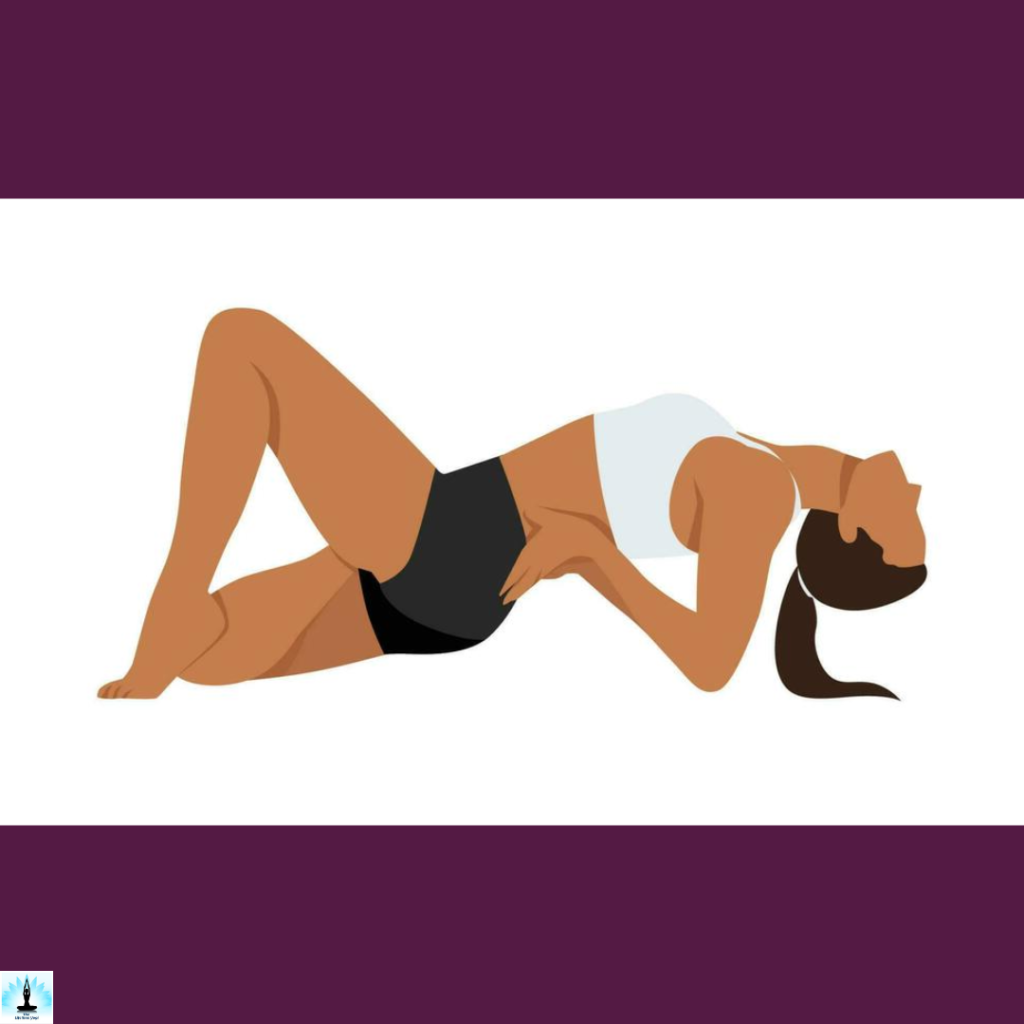
Eka Pada Matsyasana (One-Legged Fish Pose):
- From the traditional Matsyasana, lift one leg and extend it straight, parallel to the mat.
- This variation intensifies the stretch in the chest and demands greater balance and core engagement.
- Hold the pose, focusing on maintaining stability and breathing deeply.
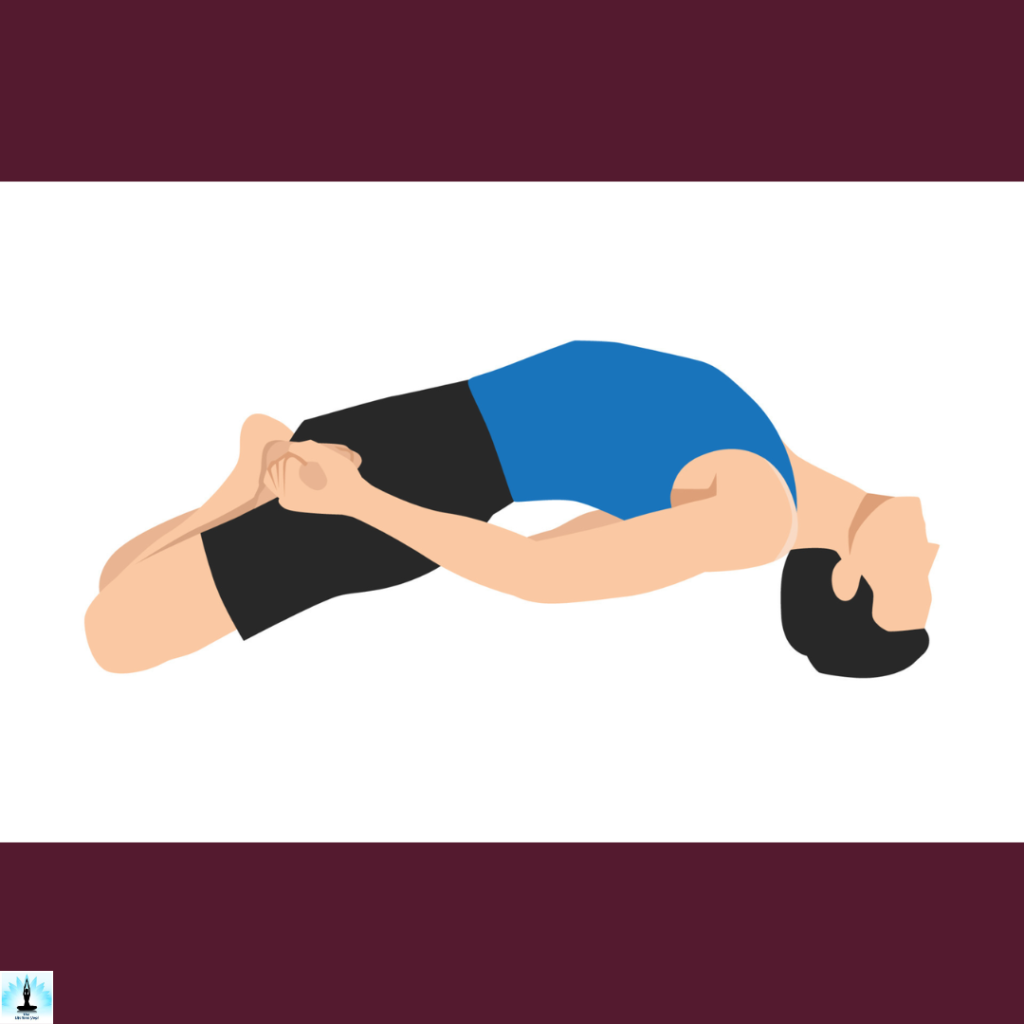
Padmasana in Matsyasana (Lotus in Fish Pose):
- Begin in Lotus Pose (Padmasana) with both legs crossed and feet placed on the opposite thighs.
- From Padmasana, recline back into Matsyasana by arching the spine and lifting the chest.
- This variation combines the hip-opening benefits of Lotus Pose with the chest expansion of Matsyasana.
- It requires advanced hip flexibility and should be approached with caution to avoid strain.

Matsyasana with Bind (Hands Clasped):
- Start in Matsyasana with the chest lifted and elbows pressing into the mat.
- Clasp the hands behind the back, straightening the arms and lifting them slightly off the mat.
- This variation intensifies the shoulder opening and challenges the flexibility of the arms and wrists.
- Focus on keeping the chest open and breathing deeply.
Therapeutic Applications of Matsyasana
Matsyasana, or Fish Pose, holds therapeutic potential for various physical and mental conditions. The deep chest expansion in this pose can be beneficial for individuals with respiratory issues, such as asthma, by enhancing lung capacity and promoting better breathing patterns.
The stretch in the neck and throat region can help alleviate tension and stiffness, making it potentially helpful for individuals experiencing mild neck pain. Additionally, the pose stimulates the thyroid and parathyroid glands, suggesting potential benefits for individuals with thyroid imbalances..
Poses Related to Matsyasana
Matsyasana, or Fish Pose, is often complemented by other yoga poses that focus on opening the chest, stretching the spine, and promoting flexibility. Some related poses that can be incorporated into a sequence with Matsyasana include:
Preparatory Poses of Matsyasana
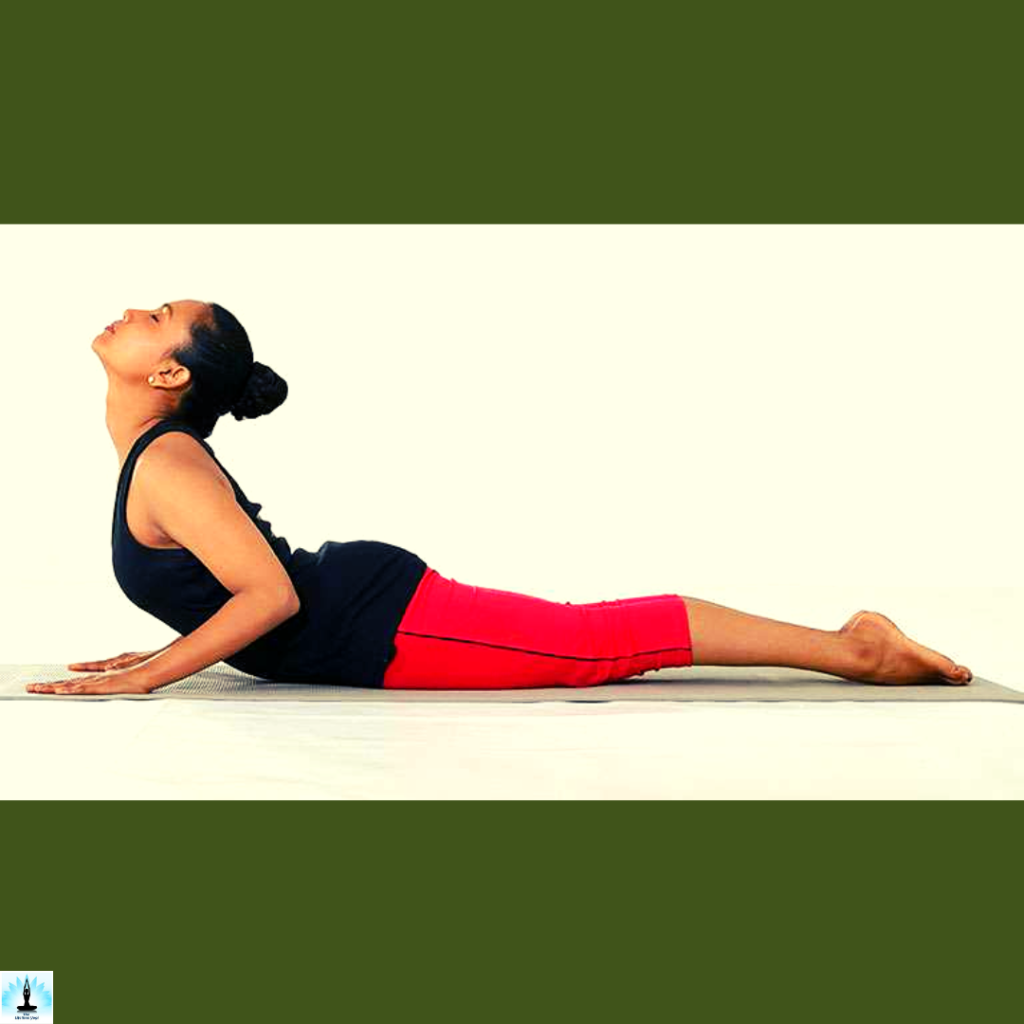
- Bhujangasana (Cobra Pose): This pose involves a gentle backbend, opening the chest and strengthening the spine.
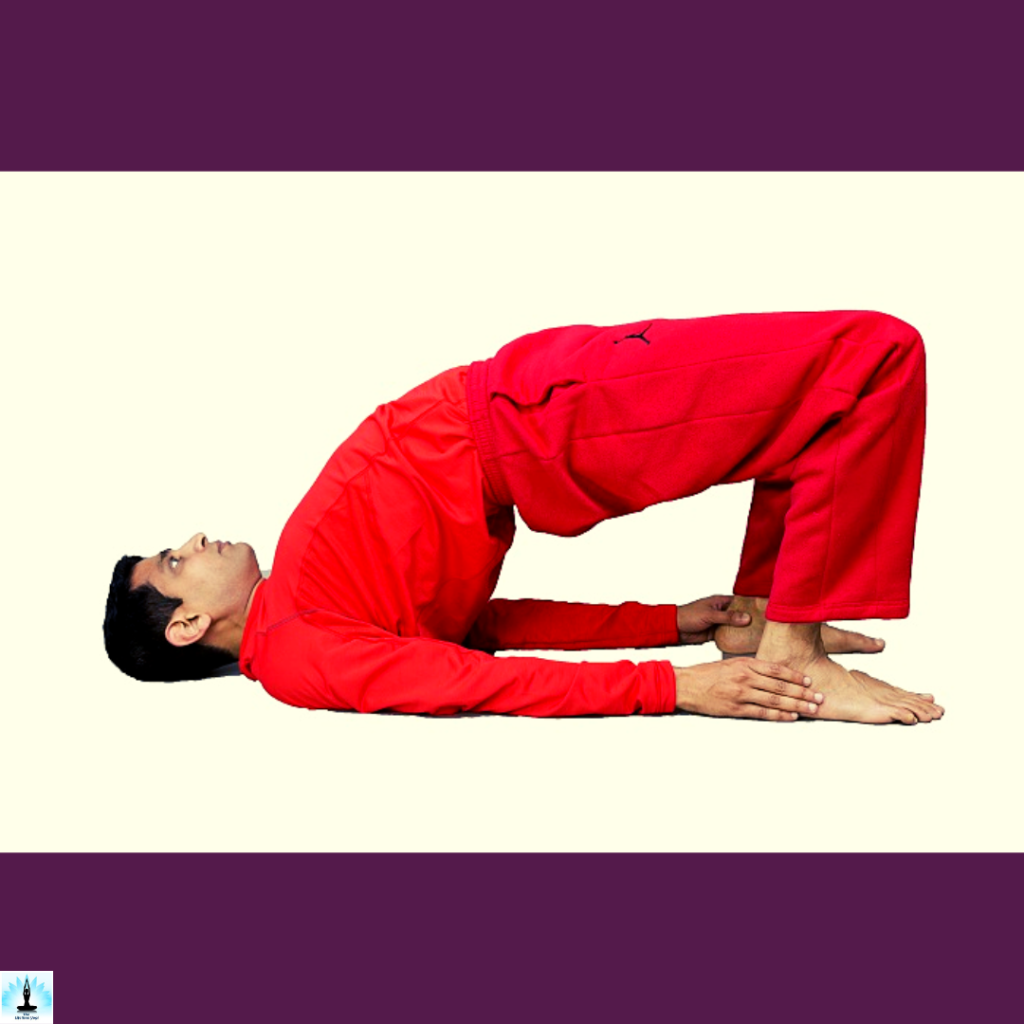
- Setu Bandhasana (Bridge Pose): This pose helps in strengthening the back muscles, while also providing a mild stretch to the chest and neck.

- Ustrasana (Camel Pose): Ustrasana is a deeper backbend that further stretches the chest and abdomen, enhancing flexibility in the spine.
Follow-up Poses of Matsyasana

- Dhanurasana (Bow Pose): In this pose, the body resembles a bow, stretching the entire front of the body, including the chest and thighs.

- Matsyendrasana (Lord of the Fishes Pose): This seated twist aids in spinal flexibility and complements the chest-opening aspects of Matsyasana.
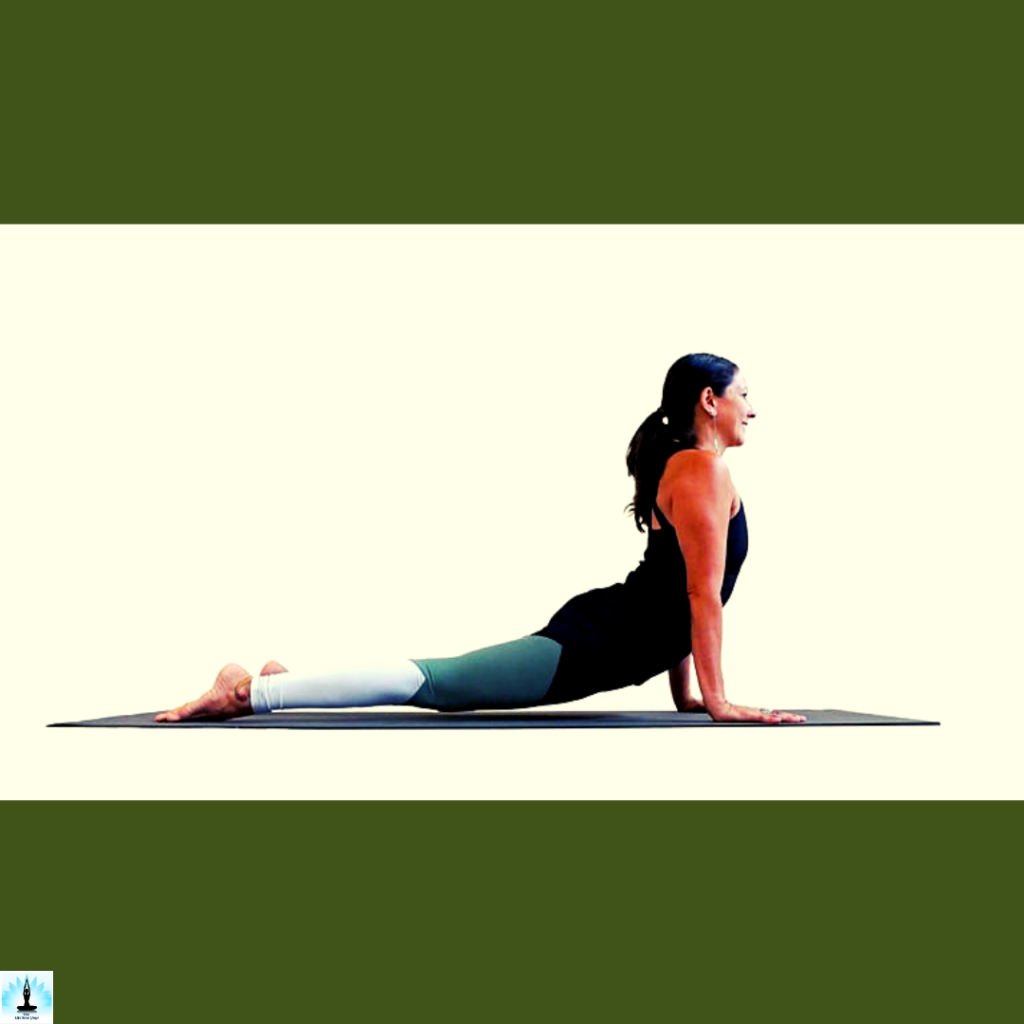
- Urdhva Mukha Svanasana (Upward-Facing Dog Pose): Similar to Cobra Pose, this asana involves a more active lift of the chest, promoting strength and flexibility in the spine.
Beginner’s Tip of Matsyasana
For beginners practicing Matsyasana, or Fish Pose, it’s crucial to focus on gradual progression and proper alignment.
- Start by placing a folded blanket or bolster under your upper back for added support, especially if you feel strain in the neck or lower back.
- Keep your legs extended and engage the muscles to support the lift of the chest. As you arch backward, prioritize opening the chest rather than straining the neck.
- Beginners may find it helpful to maintain a gentle lift of the head or even rest it lightly on the mat to avoid excessive strain on the neck muscles.
- Focus on the breath, taking slow and deep inhales to expand the chest. It’s advisable to hold the pose for a shorter duration initially, gradually increasing as your flexibility improves.
Contraindications and Cautions of Matsyasana
Matsyasana, or Fish Pose, offers numerous benefits, it is important to be mindful of contraindications and exercise caution, especially for individuals with certain health conditions.
- People with neck injuries, chronic neck pain, or cervical spine issues should approach Matsyasana with care, and it may be advisable for them to keep the head supported on a prop.
- Those with lower back problems should be cautious and might benefit from using additional support or avoiding extreme backbending.
- Individuals with high or low blood pressure should practice the pose with awareness, as the head position can affect blood pressure.
- Pregnant women should modify the pose by propping themselves up on their forearms to avoid undue pressure on the abdomen.
FAQ’s on Matsyasana(Fish Pose)
Q: What is Matsyasana?
A: Matsyasana, or Fish Pose, is a yoga asana that involves lying on the back, arching the spine, and lifting the chest. It is named after the fish and is known for its chest-opening and backbending qualities.
Q: What are the benefits of Matsyasana?
A: Matsyasana offers benefits such as stretching the chest and abdomen, improving posture, strengthening the upper back and neck muscles, enhancing respiratory capacity, reducing stress and anxiety, and activating the Vishuddha Chakra for improved communication.
Q: Can beginners practice Matsyasana?
A: Yes, beginners can practice Matsyasana. However, it’s advisable to start gradually, use props for support if needed, and focus on proper alignment. Beginners should listen to their bodies, avoid overexertion, and consider seeking guidance from a qualified yoga instructor.
Q: Are there any contraindications for Matsyasana?
A: Yes, individuals with neck injuries, lower back problems, high or low blood pressure, or pregnant women (especially in the later stages) should approach Matsyasana with caution. It’s essential to consult with a healthcare professional or yoga instructor to determine its suitability for specific conditions.
Q: How long should Matsyasana be held?
A: Initially, Matsyasana can be held for 15-30 seconds, gradually increasing the duration as one becomes more comfortable and flexible. Holding the pose for a moderate duration allows the body to adapt without causing strain.
Q: Can Matsyasana be modified for comfort?
A: Yes, Matsyasana can be modified based on individual comfort and needs. Using props like a folded blanket under the head or forearms can provide support, and practitioners can choose to lift the head less or use additional props for comfort.
Q: Does Matsyasana have spiritual significance?
A: Yes, Matsyasana is associated with the Vishuddha Chakra, representing the throat and communication. It is also linked to the Hindu mythology of Lord Vishnu assuming the form of a fish to save ancient knowledge during a deluge, symbolizing the preservation of wisdom.
Q: How often should Matsyasana be practiced?
A: The frequency of Matsyasana practice depends on individual preferences, flexibility, and overall fitness level. Including it in a regular yoga routine a few times a week can be beneficial, but consistency and mindful practice are key.
Conclusion
In conclusion, Matsyasana, or Fish Pose, stands as a versatile and valuable yoga asana that extends its benefits across physical, mental, and spiritual realms. The pose, with its emphasis on chest expansion and backbending, offers practitioners improved flexibility, enhanced posture, and strengthened muscles in the upper back and neck.
References
- Maehle, Gregor (2007). Ashtanga Yoga: Practice and Philosophy. New World Library. p. 120. ISBN 978-1-57731-606-0.
- Joshi, K. S. (2005). Yoga In Daily Life. Orient Paperbacks. p. 70. ISBN 978-81-222-0049-2.
- Sinha, S. C. (1 June 1996). Dictionary of Roop Basant Philosophy. Anmol Publications. p. 18. ISBN 978-81-7041-293-9.
- Mehta, Silva; Mehta, Mira; Mehta, Shyam (1990). Yoga: The Iyengar Way. Dorling Kindersley. p. 83. ISBN 978-0-86318-420-8.
